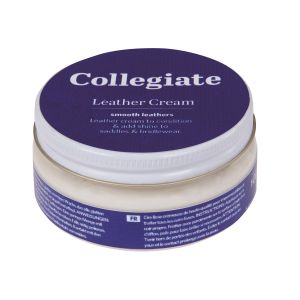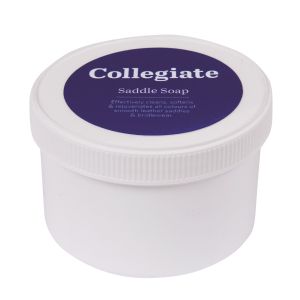Due to the nature of the sport, horse riding is considered a high-risk activity. It is important that all riders take steps to minimise the risks involved for their own safety. For example, buying a riding hat which fits correctly and conforms to the latest safety standards seems an obvious choice to keep yourself safe.
It is just as important to regularly check that your tack is safe too. Accidents from tack breakages can cause serious harm to you and your horse.
A good way to monitor your tack health is to clean and condition it. Doing this regularly will ensure your tack lives a long life and you can check for wear and tear.
What to look out for when cleaning tack:
- Cracking, thin, or dry leather. Leather is a natural product which requires regular conditioning to keep it supple. Worn leather carries an increased risk of snapping when pressure is applied. If any parts of leather are showing weakness, replace this immediately. Cracked leather cannot be repaired and a horse spooking or pulling too hard on the reins can easily cause a break
- Stretched holes. These will be particularly common on stirrup leathers and girth straps. Once these have stretched, they are more likely to break or drop. If your girth strap breaks when riding, you could easily have a fall. Change the hole you buckle regularly to help prevent them stretching. It is also a good idea to switch your stirrup leathers over periodically, as the leather on the near side will stretch quicker as you mount each time
- Rusting, loose, or bent buckles. Any hardware showing signs of wearing can easily break so will need to be replaced. Also check stitching around buckles to ensure it is not frayed
- Check the girth for any signs of wear. Damage to the girth could cause it to break when riding.
Cleaning and regularly checking your tack will help keep you safe. It is also advisable to check over your tack before each ride.
Most tack is made from leather, a natural product that requires proper care and maintenance to ensure its longevity. Leather must always be left to dry naturally, do not be tempted to use artificial heat such as a radiator. It is best to dry out at room temperature. Do not use excessive amounts of oil when caring for leather – this can be just as damaging as using none. Keep leather products clean after every use by wiping off any built-up dirt or sweat with a damp sponge. Regularly apply a light coat of leather cream to keep your bridlewear looking and feeling good as new.
In recent years synthetic tack has grown in popularity. Synthetic fabric looks like leather but is less expensive and easier to maintain. To clean synthetic tack all you need is warm water and a sponge to simply wipe off the dust and dirt. This ease of care means you never have to worry about getting caught in the rain with your saddle. Water and dirt wipe away easily, meaning you will spend less time caring for your saddle and more time with your horse. Synthetic tack will not crack like natural leather, but it will still get worn due to wear and tear so keep an eye out for weaknesses.
Other precautions you can take to ensure your tack is safe is to check the fit. Horses change shape throughout the seasons, so even if your tack was the correct size when fitted, it may not stay that way. It is advisable to have your saddle checked regularly by a qualified saddle fitter. If tack is too loose, it may become insecure and move when riding. If the tack is too tight, your horse will be uncomfortable which can cause an accident. A bridle should not be fastened on the top cheek piece hole. If the cheek piece were to break when riding, there would be no more holes to reattach the buckle to. Signs to look out for that your tack does not fit correctly are injuries on your horse. Look for cuts, rubs, sores, and abrasions around the saddle and bridle area. If your horse has been injured from their tack, allow them to recover and then have the tack checked before using again. Remember, one size does not fit all with horses so ensure your tack is always properly fitted and fastened correctly.
Keen to know more? Read our Leather Care and Synthetic Care Guide for more detailed information to keep your tack in top condition.





